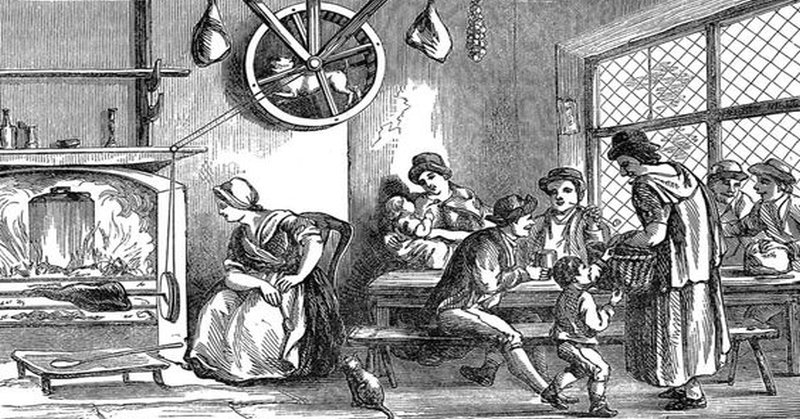Wonder what that poor dog is doing in that hamster wheel in the picture below? Well, the hot, smoky kitchens of 17th-century Europe had a lot of things besides the large open fire and the iron roasting spit that would surprise you today.

Yes, those kitchens had a giant hamster wheel-like contraption holding a small, live, constantly running dog. For hundreds of years the now-extinct turnspit dog, also called Canis Vertigus (“dizzy dog”), vernepator cur, kitchen dog and turn-tyke, was specially bred to turn a roasting mechanism for frying meat. Weirdly enough, this special dog breed was a then high-tech fixture for the professional and home cook from the 16th century until the mid-1800s.
Take a closer look at the poor thing:

As you might imagine, turnspit dogs had a difficult lot in life as far as working dogs go. According to Stephen Coren in his book The Pawprints of History, the lucky ones “worked in pairs, with one dog trading places with its mate every couple of hours.” Dry heat radiated from toothsome foods the dog could never quite reach, and turnspit dogs weren’t necessarily supplied with water on-shift. Coren adds that for the tired pups “that were considered lazy, the cook might put a hot coal into the wheel to make the dog move its feet more quickly.”
One wonders whether or not these poor heat dogs were what hot dogs were named after… But no, according to Wikipedia, the term hot dog can be traced back to the 1800s when German sausage makers were accused of using dog meat in their sausages. And since consumption of dog meat in Germany was common, the suspicion was “occasionally justified”.
via Atlas Obscura
